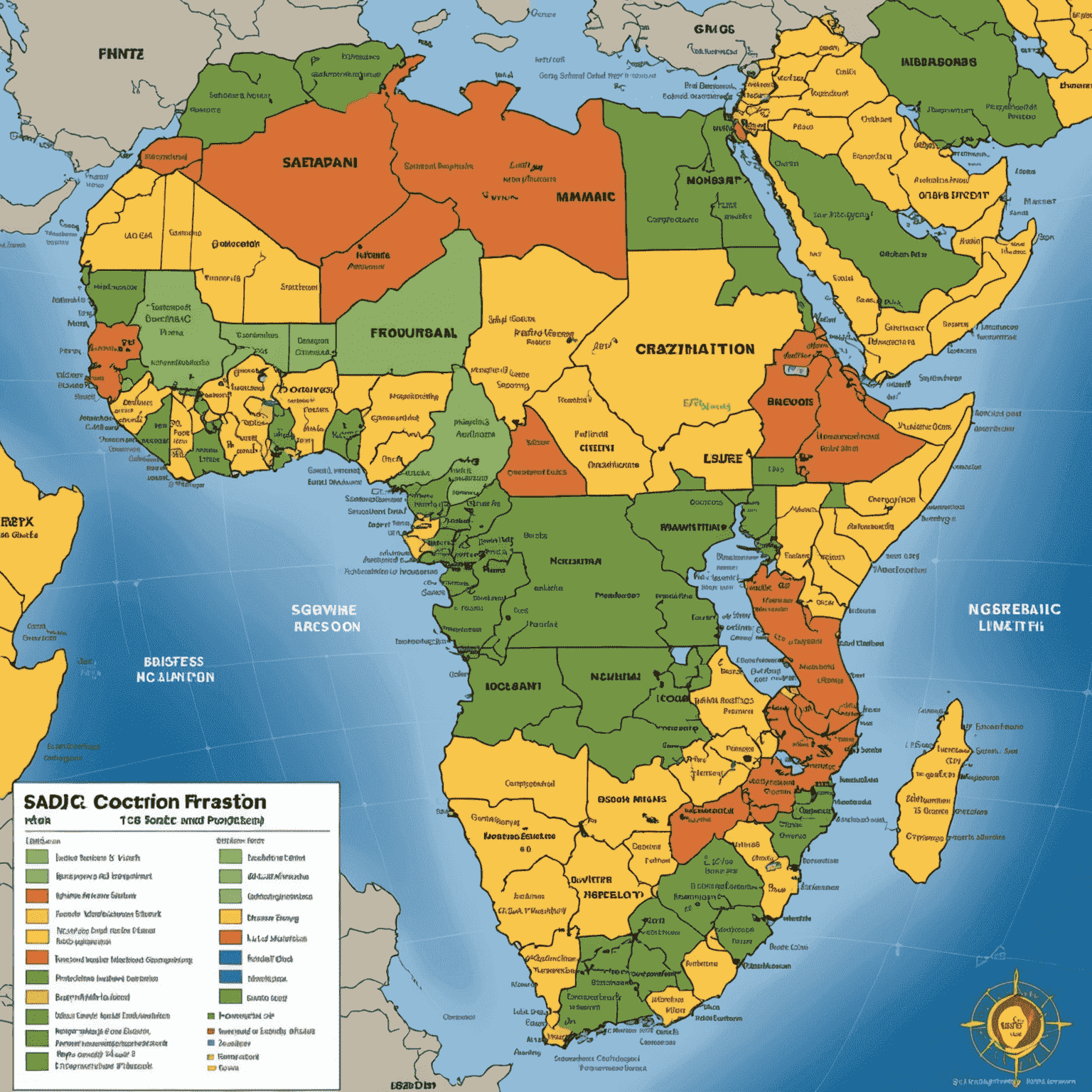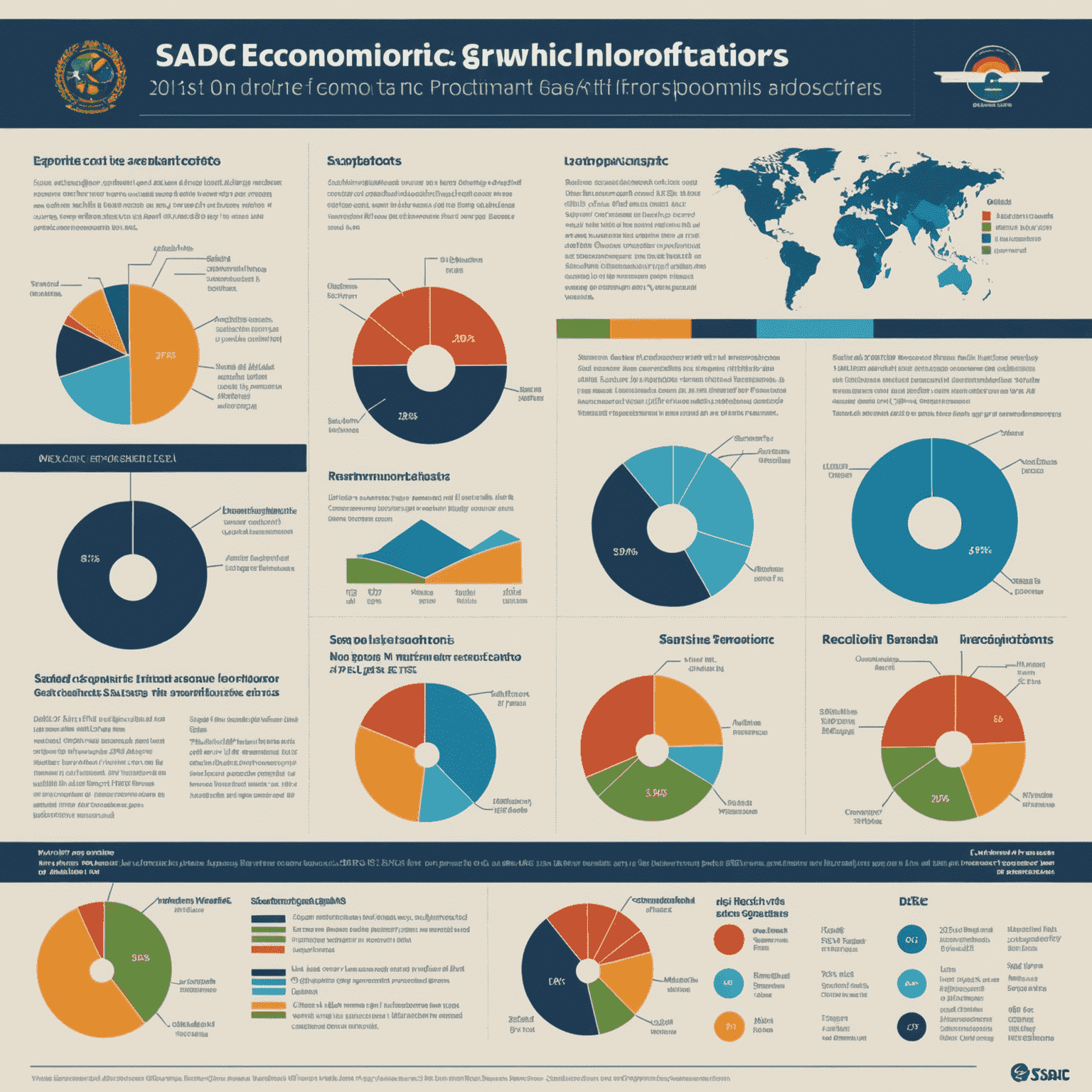SADC Economic Outlook: Navigating Growth and Opportunities

The Southern African Development Community (SADC) region is poised for significant economic transformation, presenting a landscape rich with opportunities for businesses and investors alike. This comprehensive analysis delves into the current economic climate and projects future growth trajectories across the SADC member states.
Current Economic Climate
The SADC region, comprising 16 member states, has shown resilience in the face of global economic challenges. Key indicators point to a gradual recovery post-pandemic, with several sectors showing promising signs of growth:
- GDP Growth: Averaging 3.2% across the region, with standout performances from Botswana and Mozambique.
- Inflation: Stabilizing at 5.7%, thanks to prudent monetary policies implemented by central banks.
- Foreign Direct Inflow: Increased by 15% year-over-year, particularly in mining and renewable energy sectors.
- Trade: Intra-SADC trade volumes up by 8%, signaling stronger regional economic integration.
Future Projections and Opportunities
Looking ahead, our analysis projects several key trends that will shape the SADC economic landscape:
1. Digital Transformation
The region is set to experience a digital revolution, with expenditures in ICT infrastructure expected to grow by 25% annually. This presents significant opportunities for management consulting firms specializing in digital strategy and implementation.
2. Green Energy Transition
SADC countries are increasingly focusing on renewable energy projects, with solar and wind power capacity projected to double by 2025. This shift will require expertise in sustainable business practices and green technology integration.
3. Financial Services Expansion
The fintech sector is poised for explosive growth, with mobile banking and digital payment solutions leading the way. NetSuite consultants will be in high demand to support the digital transformation of financial institutions across the region.
4. Manufacturing Renaissance
A renewed focus on local manufacturing and value addition is expected to boost the sector by 18% over the next five years. This will create opportunities for consultants specializing in supply chain optimization and Industry 4.0 technologies.
Challenges and Considerations
While the outlook is generally positive, businesses entering the SADC market should be aware of potential challenges:
- Regulatory disparities across member states
- Infrastructure gaps, particularly in rural areas
- Skills shortages in key sectors
- Currency fluctuations and exchange rate risks
Navigating these challenges requires a nuanced understanding of local markets and regulatory environments. Management consulting firms with expertise in SADC market entry strategies will play a crucial role in guiding businesses through these complexities.
Conclusion
The SADC region stands at the cusp of an economic renaissance, offering a wealth of opportunities for businesses ready to navigate its diverse markets. As the region continues to integrate and modernize, the demand for specialized consulting services, particularly in areas such as digital transformation and financial systems implementation, will surge.
For management consulting firms and NetSuite consultants, the SADC market presents a frontier ripe for innovation and growth. By leveraging local insights and global best practices, businesses can position themselves at the forefront of this exciting economic landscape.
